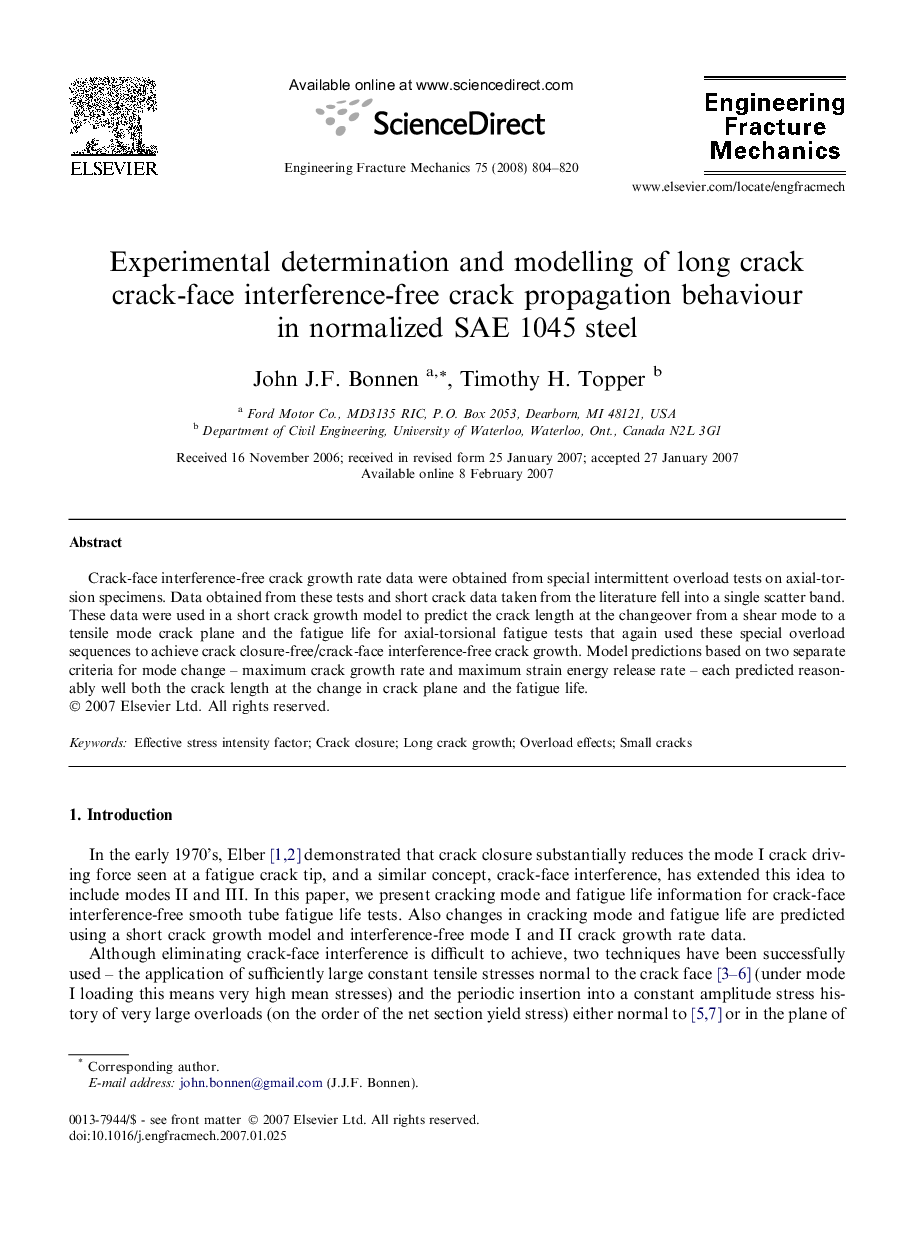| Article ID | Journal | Published Year | Pages | File Type |
|---|---|---|---|---|
| 772065 | Engineering Fracture Mechanics | 2008 | 17 Pages |
Crack-face interference-free crack growth rate data were obtained from special intermittent overload tests on axial-torsion specimens. Data obtained from these tests and short crack data taken from the literature fell into a single scatter band. These data were used in a short crack growth model to predict the crack length at the changeover from a shear mode to a tensile mode crack plane and the fatigue life for axial-torsional fatigue tests that again used these special overload sequences to achieve crack closure-free/crack-face interference-free crack growth. Model predictions based on two separate criteria for mode change – maximum crack growth rate and maximum strain energy release rate – each predicted reasonably well both the crack length at the change in crack plane and the fatigue life.
